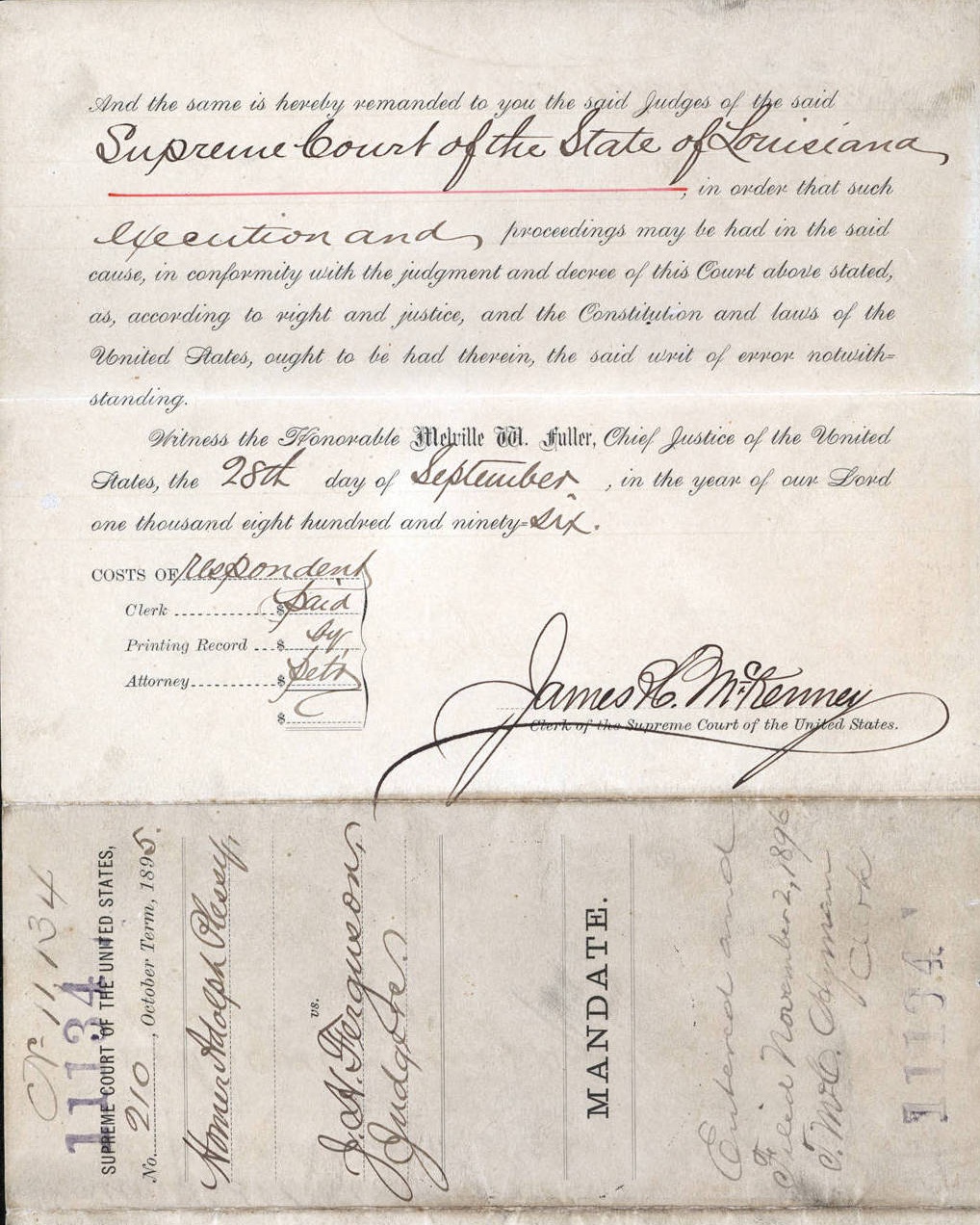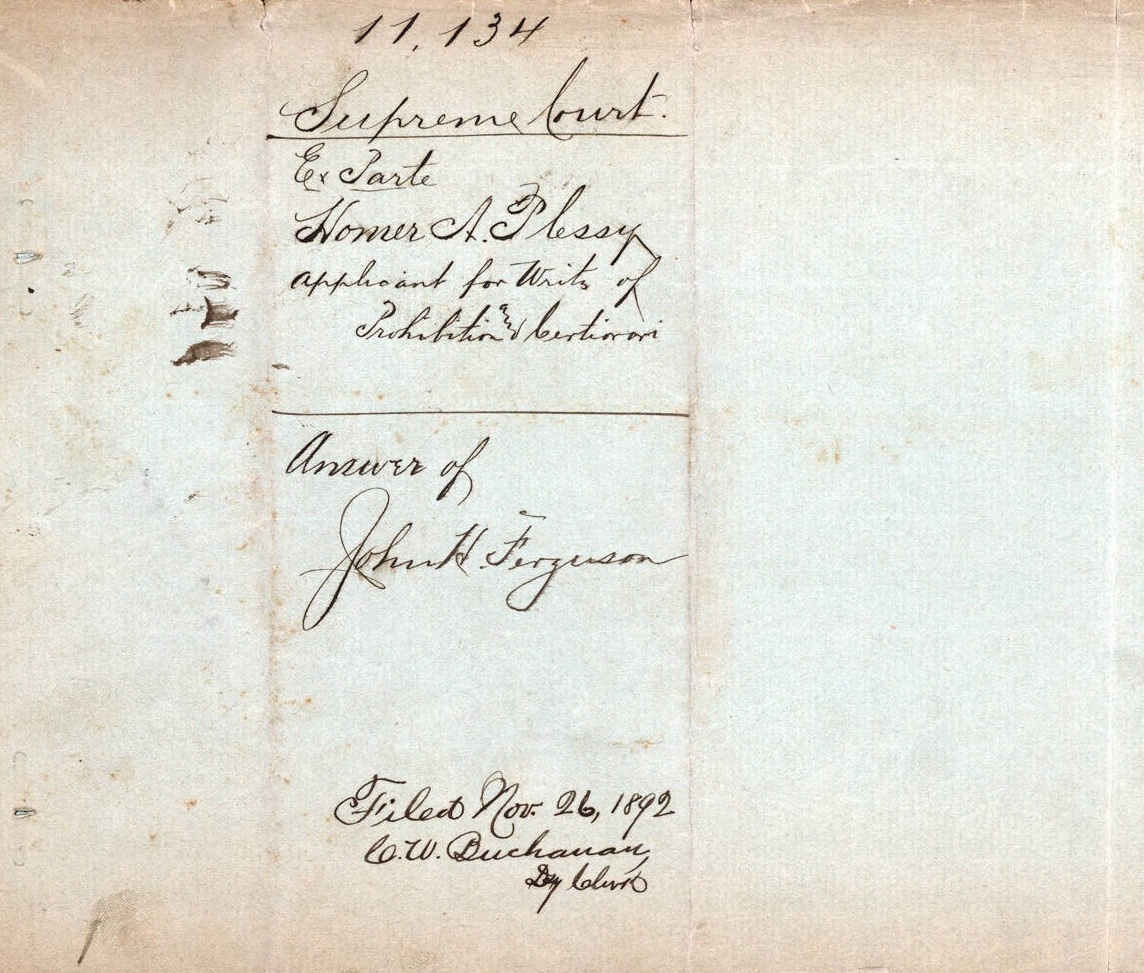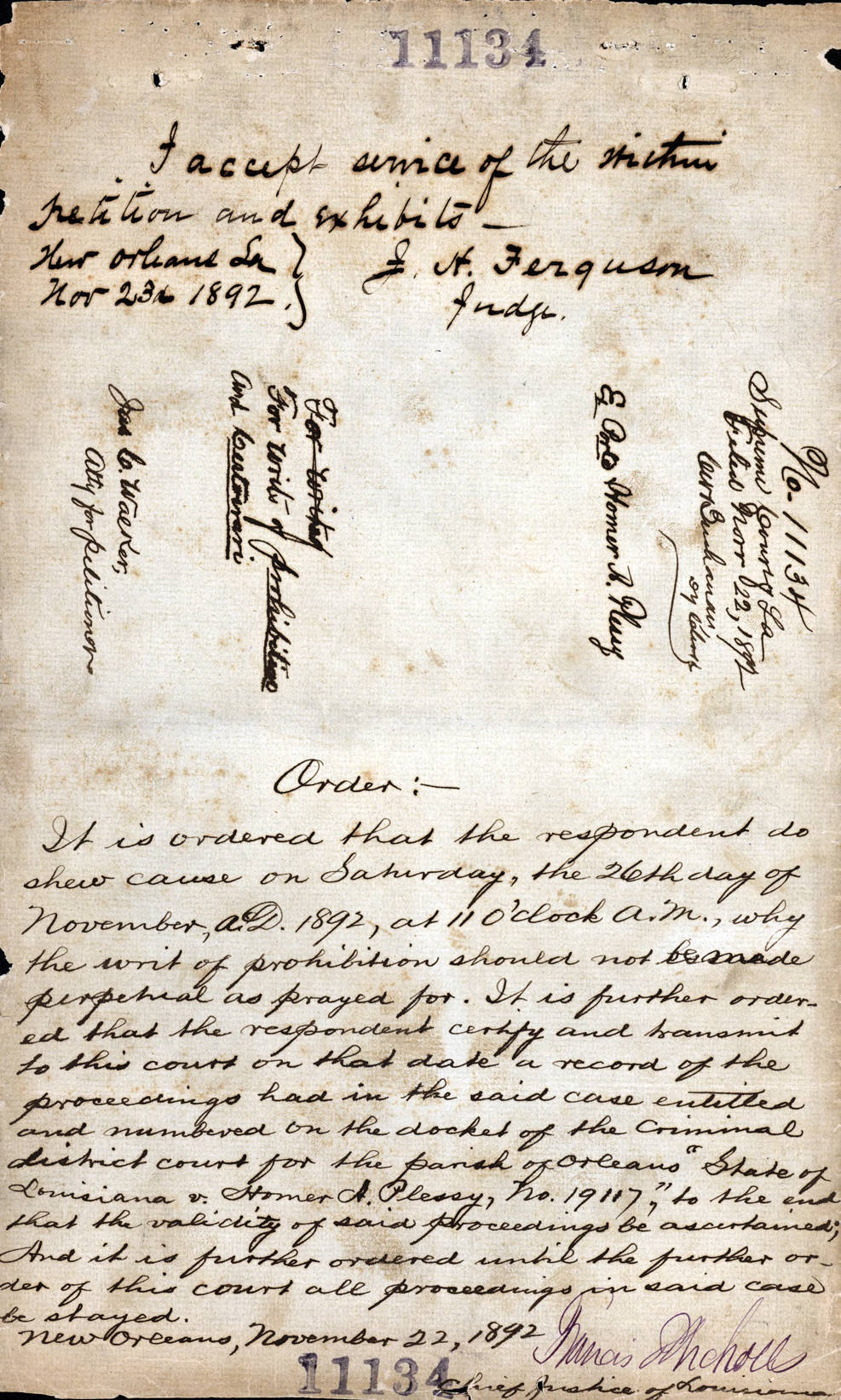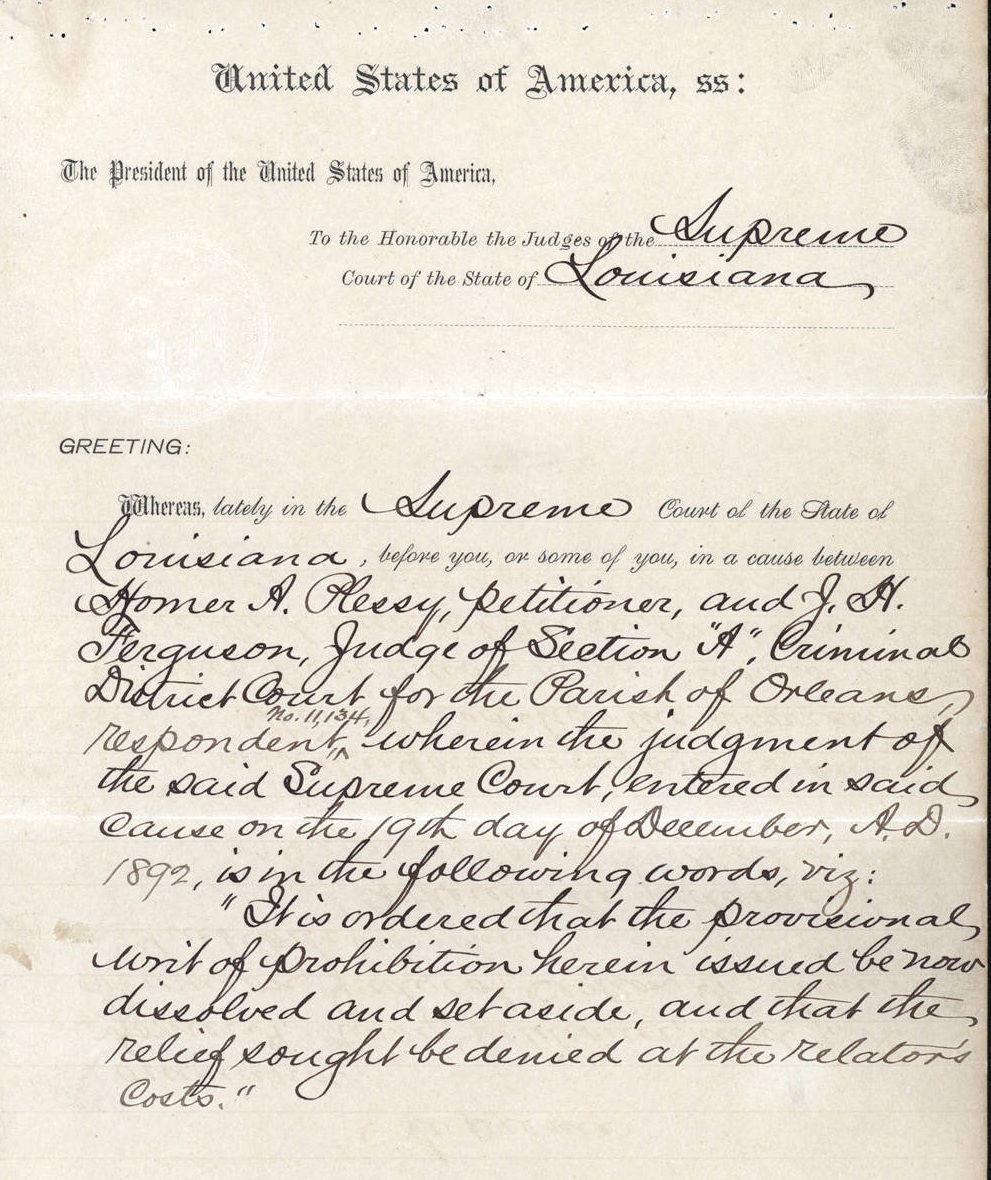A Brief History of the Evolution of the Case
Homer A. Plessy Day was established June 7, 2005, by the Crescent City Peace Alliance, former Louisiana Gov. Kathleen Blanco, the Louisiana House of Representatives, and the New Orleans City Council. On this special day, we remember Plessy, a shoemaker who was arrested on June 7, 1892, at the corner of Press and Royal streets in New Orleans. He was charged with violating the (1890) Separate Car Act of Louisiana, which mandated separate accommodations for black and white railroad passengers. But, most of all we remember the Citizens’ Committee whose members resided in the historic Tremé community. Their purpose was to overturn the segregation laws that were being enacted across the South.
The committee chose a moment in history and a place in the city’s economic landscape (the Press Street Railroad Yards) that would most effectively draw attention to their cause. Every detail of Plessy’s case was strategically planned by the Committee. Attorneys Louis Martinet and Albion Tourgee timed the action to coincide with the National Republican Convention in Minneapolis, as a prod for the party of Lincoln to focus more on civil liberties in the South. In addition, the Press Street Wharf, which is located near the Press and Royal Street site, was the busiest wharf in the city of New Orleans. Any attempt to disrupt the order of business there would be sure to be taken seriously.
The decision to use civil disobedience to challenge Act 111 was part of a strategy intelligently crafted by the Citizens’ Committee. On November 18, 1892, Judge John Howard Ferguson ruled against Plessy. His decision was upheld by the Louisiana Supreme Court. Later, in 1895 Ferguson’s decision was appealed to the Supreme Court of United States as the landmark Plessy vs. Ferguson case of 1896. When that body upheld the earlier rulings on May 18, 1896, the separate-but-equal doctrine became the established law of Louisiana and the foundation for Jim Crow policies throughout the country. Although the Supreme Court ruled against Plessy, the Citizens’ Committee’s use of the 14th Amendment’s equal protection provision to challenge segregation marked the first post-reconstruction use of that strategy and it was eventually adopted as the basis for the Civil Rights movements of the 20th century.
Ten years after the experience of Plessy v. Ferguson, a group inspired by the case convened. Delegates from 14 states formed the Niagara Movement. That movement, in turn, led to the formation of the National Association for the Advancement of Colored People (the NAACP), which played a central role in the fight for federal Civil Rights legislation in the 1950s and 1960s. Leading a team of NAACP lawyers, Thurgood Marshall (who eventually became the first black U.S. Supreme Court Justice) combined five cases and successfully used Plessy’s 14th Amendment arguments before the U. S. Supreme Court in the landmark Brown vs. Board of Education decision of 1954, which effectively overruled the separate-but-equal doctrine.
Rosa Parks, who defied the “back of the bus” restrictions against people of color on December 1, 1955, has rightfully been called “The Mother of the Civil Rights Movement.” She joined the Montgomery NAACP in 1943. Her historic refusal to sit in the back of a Montgomery, Alabama bus was foreshadowed 59 years before her time by a proud shoemaker from New Orleans. Homer Adolph Plessy, who, with the Citizens’ Committee, challenged the 1890 Separate Car Act of Louisiana on June 7, 1892. In doing so they laid the groundwork for much of the Civil Rights progress that we experience today.






